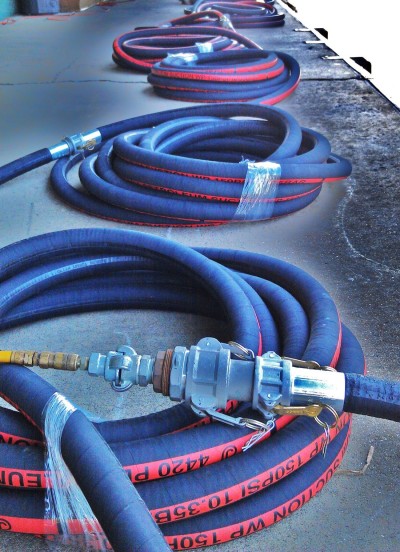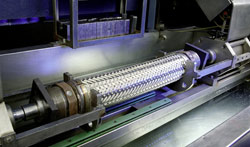Our in-house hose testing capabilities allow us to help your run safely and efficiently. We can test and certify most of your hydraulic and industrial hoses to 10,000 PSI.
The United States Department of Labor defines Hydrostatic testing as: “the method used to pressure test components for leaks and structural flaws by pressurizing them with a liquid.”
To understand how hydrostatic testing is used to check a hose assembly for leaks or flaws, let’s take a look at the procedure:
The assembly must first pass a visual inspection, then it is placed into a steel chamber, which is then filled with water at normal pressure. A glass burette attached to the side of the steel chamber will read zero, indicating normal or zero pressure of the chamber water. Water is then applied at high pressure to the interior. As the pressure increases, the cylinder will expand and push water from the steel chamber through a small hole and into the glass burette. After the pressure is released, the cylinder will contract and the water will move from the burette back to the steel chamber. Depending on the results, the tester will either pass or fail the hose assembly. The assembly is normally considered unsafe and will fail if:
The water level in the burette continues to rise while the specified pressure is applied. This could be due to a leak from the inside to the water in the steel chamber, or to a continual expansion of the walls, both of which would be a reasonable cause to fail the cylinder.
The hose stretched and with the pressure released does not return to its original size (or close to it), it would mean it is not resilient enough to be considered safe for use.





